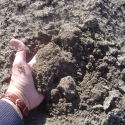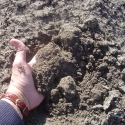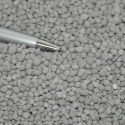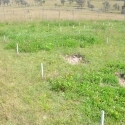18 Aug 2014
Copper deficiency and frost damage
Similar symptoms - different causes
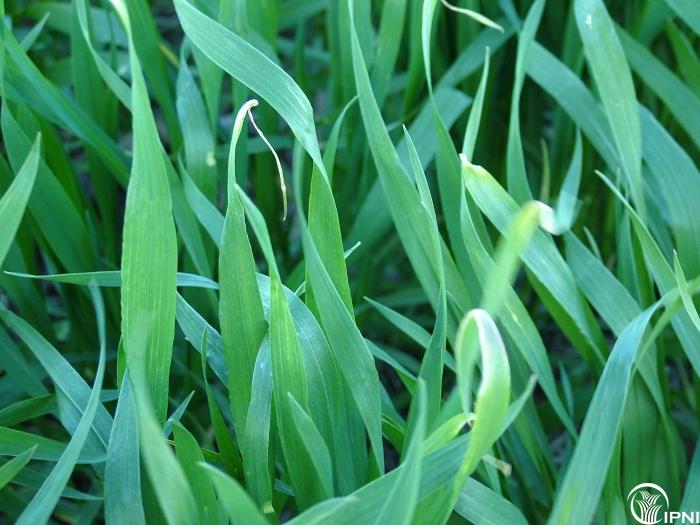 Copper deficiency (S Moroni, CSU)
Copper deficiency (S Moroni, CSU)
In late 2013 and winter 2014 frost has been a big topic in southeastern Australia with some crops severely damaged. The timing of the frost events have been quite different in the two years, with late frosts causing head damage (whiteheads) in 2013 but the damage in 2014 is from early very heavy frost (<-4oC) which with some crops has caused the death of the developing head as early as the 2-3 node stage. The death of the main stem head at this stage means that tillers are now going to carry the yield burden providing they are not damaged. Those tillers are later and may have missed the frosts so the yields - although reduced are likely to show some recovery.
The damage to the leaves - often seen as "footy socks" or similar patterns of damage. Moderate ground frosts check the leaf growth which shows up as a yellowed pattern at the level where the frost occured.
The spatial distribution of the damage may also help with diagnosis - frost is less common on the higher parts of the paddock, and on the lower parts is quite widespread. Copper deficiency can be in either area. Copper deficiency occurs most commonly on coastal sandy soils, soils low in organic matter, loams of granitic origin and on peat soils. Stock have a higher requirement for Copper than crops, so steely wool in sheep, depigmentation of coloured sheep or paling of the coat colour of Hereford cattle are also symptoms of reduced Copper supply.
I have been asked by several agronomists if there is a link between frost and copper deficiency, and so, can applying foliar copper reduce the effects of frost.
The simple answer is no - there is no link and there is nothing in the literature to support the use of foliar-applied copper - or indeed other micronutrients - to alleviate the effects of frost. Frost damage to grain occurs as ice crystals form, and expand, so damaging the cells and killing the grain. The result is dead tissue.
There have been suggestions that copper kills "ice-nucleating bacteria" - which are naturally occurring bacteria (several types implicated) that have proteins that become a nucleus for ice crystals to form. Copper does change the nature of these bugs to become non-nucleating, but the reduction in frost damage (say with citrus and maybe almonds) requires application 10 hours before frost occurs - so the benefit is very short lived (Constantindou et al., 1991, Physiologica Plantarum 81, 548-554).
The only link to copper deficiency is that the symptoms of copper deficiency are similar to frost damage. Copper is important in the development of fertile pollen, and if the crop is deficient, pollen production is reduced and flowers are not fertilized. The consequence is an empty head. Take-All (Gaeumannomyces graminis var tritici) and drought also show similar symptoms of empty heads.
Frost damage during early growth - note the rings of yellow which coincide with the occurrence of frost.
Foliar damage due to copper deficiency in wheat - tipping of the youngest leaf.
Frost damage in more mature cereal leaves - note that the damage extends up the leaf but it is not rolled like copper deficiency. Photo from Simon Craig.
Damage to the developing head in wheat - photo from Barry Haskins.
Empty heads in wheat due to copper deficiency.

